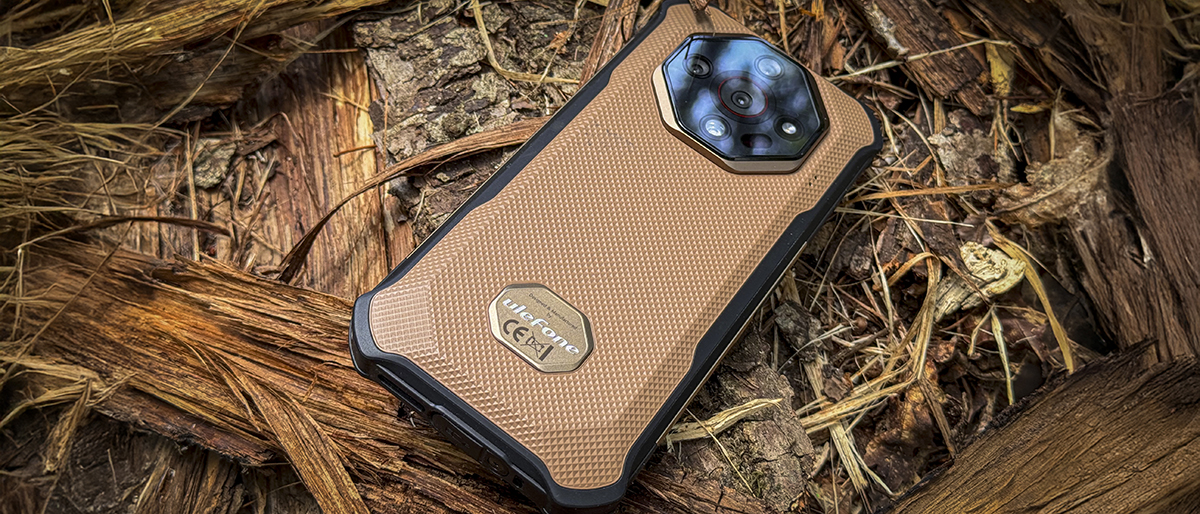TechRadar Verdict
While the design and overall aesthetics shout rugged this phone also has a formal, stylish look. In use, the large screen is bright and crisp, and the CPU-GPU combo provides just enough power to easily navigate documents, multimedia and games, making a good all-round option for as a tough phone for work or adventures.
Pros
- +
Rugged outdoor use
- +
Extended off-grid operation
- +
5 G network access
Cons
- -
Heavy and thick build
- -
Limited screen resolution
- -
Macro camera only 2 MP
Why you can trust TechRadar
Ulefone Armor X16 Pro: 30-second review
I started this test not overly taken with the colour scheme of this phone, although I did really like the textured surface on the back as well as the overall aesthetic. It was more the brown, gold and black colour scheme; however, I was pleased to see that alongside this colour profile, there is also a pure black version, which looks amazing.
As I looked through the specifications, it came with all the usual rugged credentials, which is great to see, meaning that I could drop and submerge the phone in water as I pleased. Whatever the conditions, I could be sure that the phone would survive, making it a great option for use in the field on photographic projects.
The only issue is that this is the middle of summer, and outside temperatures are topping 30 °C, so there are few puddles to drop the phone into. I did my best to drop the phone, finding what was left of a stream of stream in order to test just how waterproof it was, alongside the usual performance test using various Google applications, media creation and games to test out the full spectrum of uses for the mobile phone.
From the outset, it was apparent that for general use, this phone was perfectly optimised. What I really liked was the large screen, which had a decent brightness up to 900 nits, meaning that even in the abnormally bright conditions we have here in the UK at present, scrolling through documents and reading content online was possible. Whilst the screen is reflective, that brightness just cuts through the reflections enough to easily make out what is on screen.
I also found the 5G connection was good and robust, and whilst most of the test was carried out on a 4G connection, popping up to the local town of Salisbury proved that it could cope with good, fast network connections, providing decent transfer rates and speeds.
Call clarity also seemed good. Even when used out in the New Forest, where there was little to no signal, voice calls came through clearly, and I was impressed by the clarity of the small internal speaker.
That speaker proved to be exceptionally good for watching back media and listening to music, although it isn't quite the quality of a decent consumer smartphone.
Sign up to the TechRadar Pro newsletter to get all the top news, opinion, features and guidance your business needs to succeed!
One area that suffered slightly was gaming, as highlighted by the benchmarking results. Through all of the 3DMark benchmarks, including Steel Nomad, Wild Life and Sling Shot, frame rates were slightly reduced compared with more expensive models with many of the more intensive games highlighting the mid performance GPU. Need for Speed: Asphalt ran absolutely fine; however, if you want to play Call of Duty, this might not be the best option for you.
For the most part, performance was excellent. One area that really stood out was the cameras, which were lower in megapixels compared with many rugged smartphones that top out at 200 million pixels. Here, the 64 million-pixel Sony-backed camera produced excellent results, far better than I would usually expect. Crossing over to video, the clarity of the visuals was equally impressive.
The audio quality of the video recordings varied greatly depending on whether you were recording with the rear or front camera. Oddly, filming with the rear camera captured far better vocals than when using the front-facing selfie camera.
Overall, after using this phone for a few weeks, I was generally impressed by the overall performance - it's up there with the best rugged phones I've used. As long as you are thinking about using this for work situations where a standard consumer phone would struggle due to the physical demands placed on them, or alternatively it's a great option for adventuring.
Ulefone Armor X16 Pro: Price & availability
- How much does it cost? $279 / £206
- When is it out? Now
- Where can you get it? Widely available
The Ulefone Armor X16 Pro is widely available and can be purchased at US$279 / £206 from the Ulefone official site by clicking here.
I'm also seeing with major online retailers including Amazon.com for $230 at time of review, and £230 on Amazon.co.uk.
- Value: 4 / 5
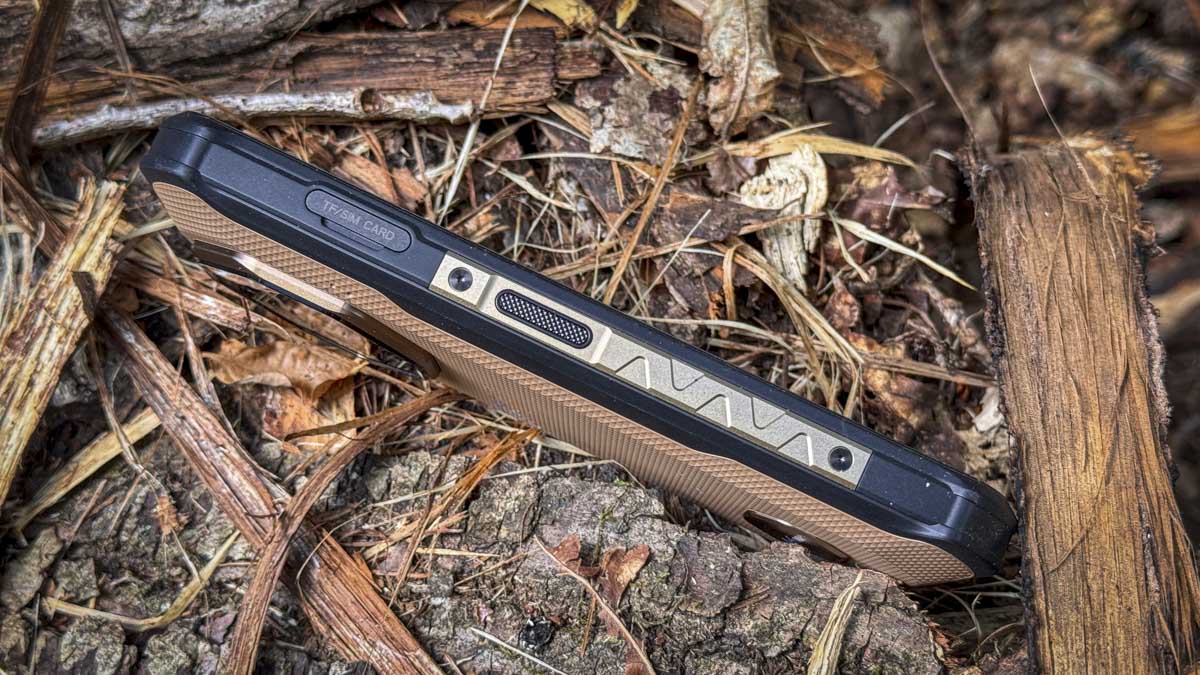
Ulefone Armor X16 Pro: Design
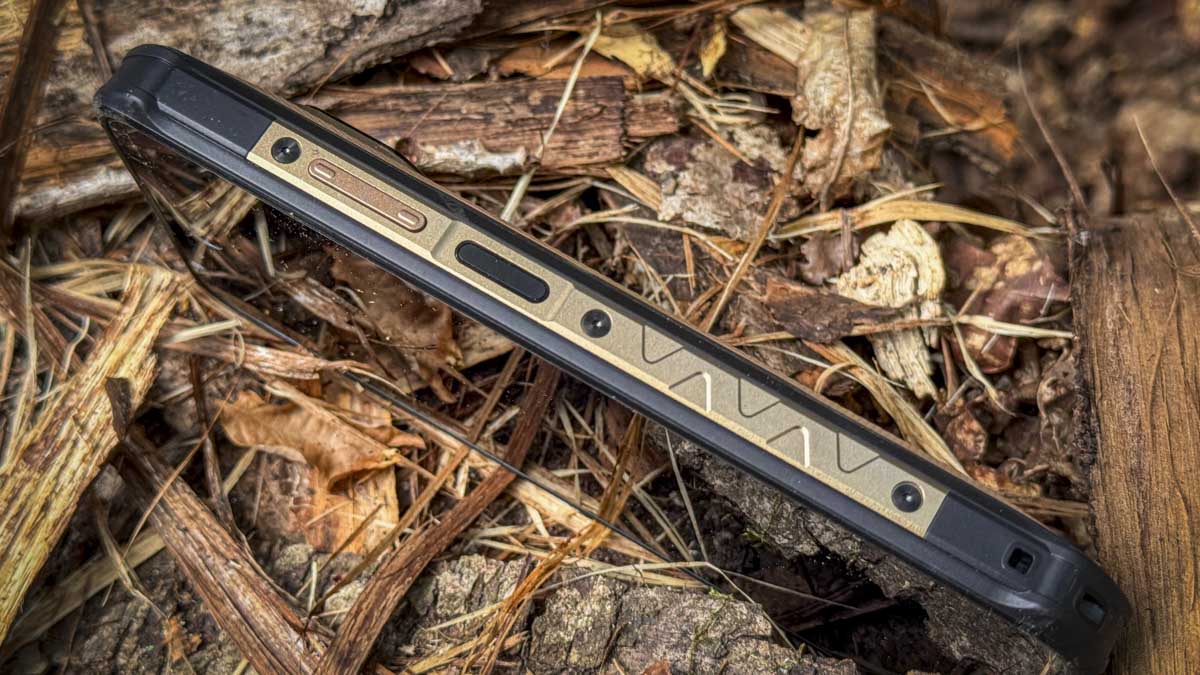
CPU: MediaTek Dimensity 6300
Graphics: Mali-G57 MC2
RAM: Up to 16 GB (plus 8 GB extended virtual)
Storage: 256 GB ROM, microSD up to 2 TB
Ports: USB-C (33 W), dual-SIM slot, Waterproof-plugged ports for charging/audio
Connectivity: 5 G, dual-SIM, IR blaster, NFC & Google Pay
Audio: Mono speaker (rugged) + front camera microphone
Camera: Rear 64 MP (Sony IMX682, f/1.9), 25 MP night vision (Sony IMX550), 2 MP macro; Front: 16 MP Samsung
Size: 173.78 × 83.4 × 17.95 mm
Weight: 394.5 g
OS: Android 15 with Google Gemini AI assistant, AI Recorder, Widevine L1
Accessories: 33 W charger included, optional rugged case/holster/mounts available
The design of the Ulefone Armor X16 Pro really stands out, with its textured back, brown and gold accents, and an aesthetic that is also available in pure black. It gives a slightly sci-fi-inspired and decidedly rugged look inline many other rugged smartphones on the market.
I have to say, this particular phone feels a lot more comfortable in the hands. Although it’s still quite wide and large, it is a decent proportion for most people’s grip.
The weight is also well balanced considering the size of the internal battery and the robustness of the device, which makes it far more usable than many of its larger alternatives.
In terms of size and weight, measuring 173.78 × 83.4 × 17.95 mm, it can easily slip into a jacket or pocket without adding too much bulk. Considering it weighs 394.5 g, it isn’t overly heavy either.
On the front, the phone is dominated by the large 6.56-inch screen with a 120 Hz refresh rate. Integrated into the screen is the selfie camera, which offers a 16 million-pixel sensor, perfect for video calls and vlogs.
On the back, the octagon-shaped cluster of cameras features a 64 million-pixel main camera, a 25 million-pixel night camera and a 2 million-pixel macro camera. There’s also a built-in LED flash, which is handy when camping, as well as a standard camera light.
One of the main features of any rugged smartphone is its rugged credentials, and the phone offers IP69K, IP68 and MIL-STD-810H certification, meaning that it is waterproof, dustproof and drop proof, as tested in this review.
It’s also nice to see that outputs such as the 3.5 mm headphone socket and USB-C data/charging port are both covered with secure rubber flaps.
On the left-hand side of the handset, as you look at the screen, there is a TF/SIM card slot with space for two SIMs and a microSD card to expand storage. Below this is a customisable button that you can assign to different apps. Over on the right-hand side are the volume toggle, power button and biometric fingerprint recognition button. That’s all, keeping it nice and simple.
- Design: 5 / 5
Ulefone Armor X16 Pro: Features

The Armor X16 Pro sits at the entry level of rugged smartphones, yet despite that, it packs in plenty of features to suit most people looking for a phone that can survive more than a standard consumer unit.
Some of the key features highlighted by Ulefone for this smartphone include a dedicated flashlight, which is great if you’re working outdoors and need a torch to throw a decent spread of light.
Powering the phone is a 10,360 mAh battery that offers 33 W fast charging and 5 W reverse charging, so not only does it power the phone, but it can also give other devices a boost.
Inside there’s a MediaTek Dimensity 6300 eight-core CPU with a 6 nm advanced process and clock speed of up to 2.4 GHz, including Cortex-A76 gaming cores. This is partnered with a Mali-G57 MC2 GPU. There’s also up to 16 GB of RAM, 8 GB on board and a further 8 GB accessible through dynamic RAM.
For storage, there’s 256 GB of ROM, which can be expanded up to 2 TB using a separately purchased microSD card.
On the back of the phone is the octagon design cluster of cameras detailed in the Build and Handling section, offering decent quality far beyond most other smartphones of this type.
Dominating the front of the phone is the 6.56-inch IPS display with a 720 × 1612 resolution, 120 Hz refresh rate and 910 nits of brightness. This is protected by Gorilla Glass 5, which in testing proved to be exceptionally tough.
Tying all the hardware together is Android 15. The version on this phone is relatively lightweight, so it’s not bogged down by proprietary apps, and also features the latest Google Gemini, so you can use the phone’s AI potential, including the AI Recorder, which is a handy additional feature.
Surprisingly this phone is also Widevine L1 certified, meaning it has full digital rights management certification, enabling you to stream higher quality from major providers such as Disney+ and Netflix. For an entry-level rugged smartphone, the visuals and audio quality are surprisingly good.
- Features: 3.5 / 5
Ulefone Armor X16 Pro: Performance
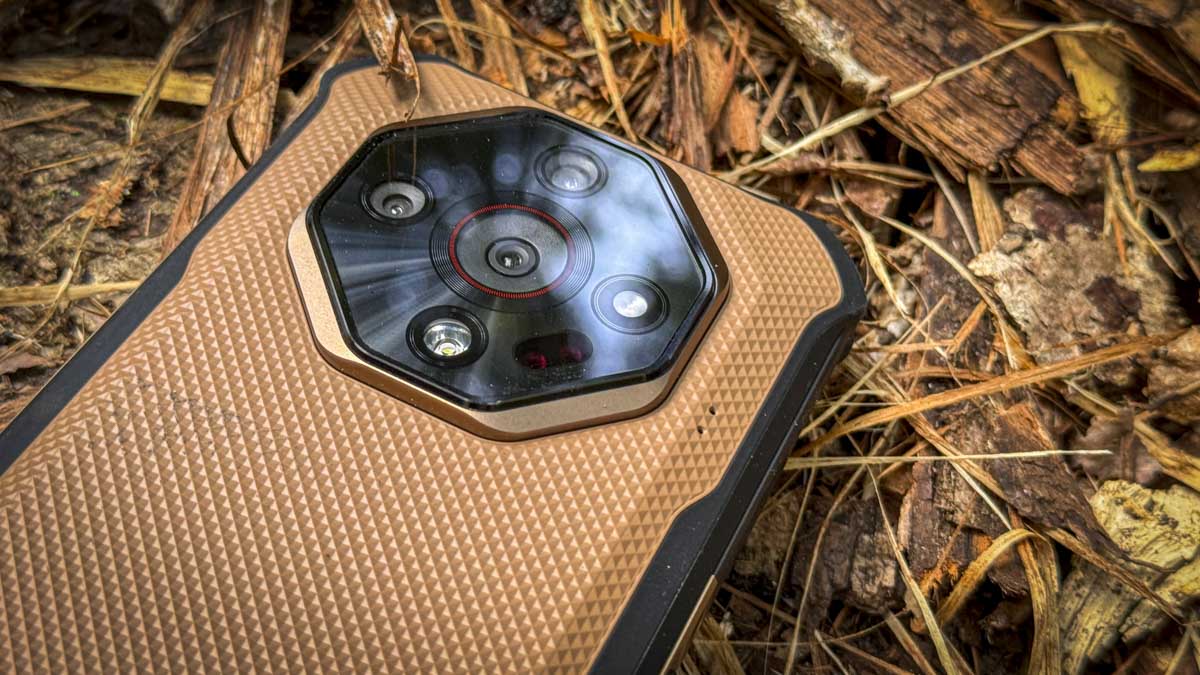
Getting started with the smartphone, the first thing I did was check the reception quality. Putting it side-by-side against an iPhone 15 Pro on the Vodafone network, the Armor X16 Pro actually proved to have better reception with four bars over the iPhone’s three.
When it came to browsing the internet, where the iPhone 15 Pro was slow to respond, page load speed on the Armor X16 Pro was relatively fast.
Using both 4G and 5G networks, the Armor X16 Pro proved to be exceptionally robust. Making voice calls demonstrated how clear the audio quality was, both from my perspective and to my caller, clear and crisp in both directions.
Starting with basic performance tests, I opened Google Docs and reviewed this part written document. It was easy to read through the text on the bright, clear screen. While the resolution is lower than I’ve come to expect from many smartphones, the text was still very clear and readable.
One thing I noted was that as you scroll, the quality of the screen stands out. With plenty of adjustment over brightness, tone and clarity, it offers exceptional viewing for a phone at this level.
Exploring the options and settings, I was impressed with the ease of use and the speed with which the phone navigated Android 15’s menus. The MediaTek Dimensity 6300 CPU provided plenty of performance for general use.
Pushing performance further, I used Lightroom to adjust images I had taken during a work outing. The clarity of the images was impressive, and unlike some phones I’ve used in the past that struggle when applying effects, the Armor X16 Pro handled it with relative ease. The screen clarity also made the adjustments easier.
Using CapCut to quickly edit video content shot with the phone, I was again impressed with the speed. Although CapCut is highly optimised for mobile, some phones still struggle. For basic edits, the phone handled 1080p video without issue. Pushing to 4K and adding graphics, the phone began to slow down, and the limits of its processing power became apparent.
Gaming performance followed a similar pattern. Need for Speed: Asphalt ran perfectly smoothly, but Asphalt 9: Legends, Call of Duty Mobile, and PUBG Mobile all began to drop in graphics quality. This was reflected in the 3DMark scores, Steel Nomad Light: 145, Wild Life: 4,137, and Sling Shot: 3,657.
While these scores aren’t particularly high, they are in line with most rugged smartphones. What gives this phone a slight edge is its exceptionally high read speed of 1,246 MB per second.
Disk Speed Test Read: 1246 MB/s
Disk Speed Test Write: 347 MB/s
Geekbench CPU Single: 731
Geekbench CPU Multi: 1975
Geekbench GPU: 1401
3D Mark Steel Nomad Lite: 145
3D Mark Wildlife: 1373
3D Mark Slingshot: 3657
- Performance: 4 / 5
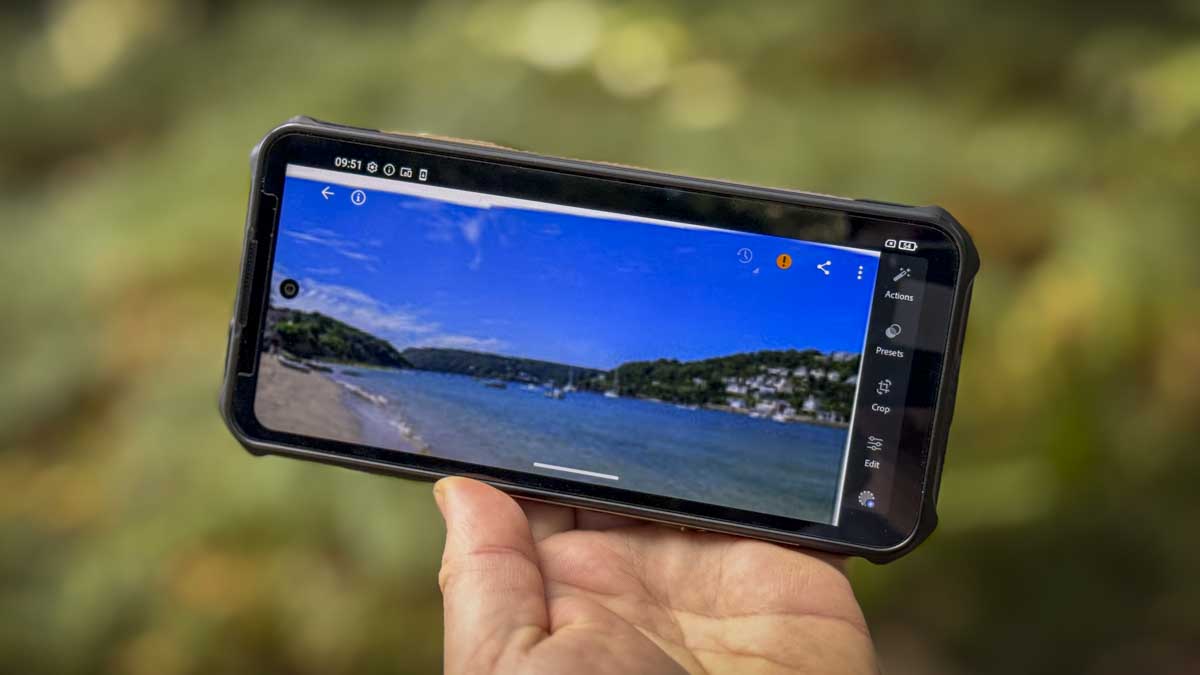
Ulefone Armor X16 Pro: Final verdict
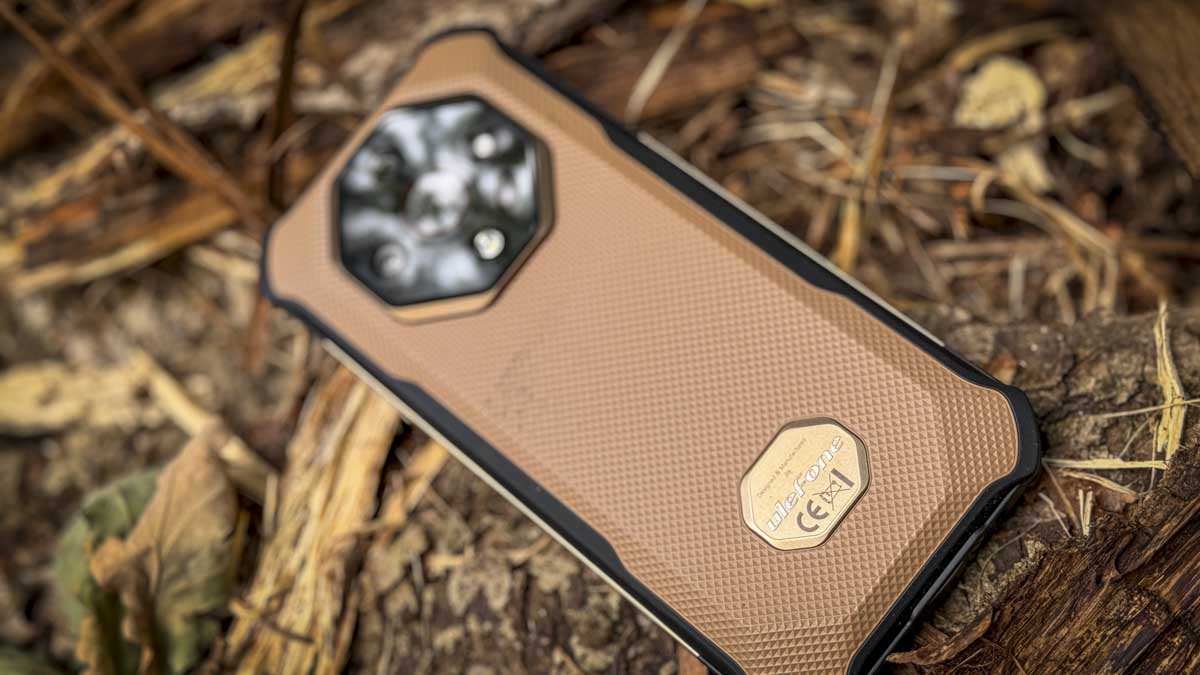
After using the phone solidly for a few weeks, I’ve been really impressed, firstly by the build quality and the comfort of using this phone. It is far more usable and ergonomic than many other rugged smartphones.
Secondly, the battery life was exceptional for the size and weight. At the start of the test, I charged it to 100%, and after three weeks it had only dropped to 25%, highlighting just how robust that internal battery is, although I wasn’t in full use all the time.
Overall, the battery performance was excellent, and the fact that I could reverse charge my iPhone using the 5 W reverse charging feature was very handy.
The standout features for me were the cameras. I wasn’t expecting the clarity of images that the 64 million-pixel main camera produced. The stills were great, and the video capture was equally impressive. Coupled with some wireless mics, it’s a great option if you need to capture video out in the field, perfectly suitable for most social media platforms.
When editing media using CapCut or Lightroom, I was impressed by the performance of this mobile phone. Considering that it’s at the entry level of the rugged phone market, it performs surprisingly well.
At the end of the test, having submerged the phone in water, dropped it from a height and tested it in the field, I’m surprised at how inexpensive this rugged smartphone is. While graphics performance and for that matter the screen resolution is at the lower end of the scale, for Google Docs and multimedia content, it works absolutely fine.
If you’re looking for a decent rugged smartphone for work and you don’t want to spend too much, then this is a great option. Likewise, if you’re heading off on an adventure, and need a solid phone with good battery life that’s isn't too heavy then again this also an ideal solution.
What really makes it stand out for me is the quality of the camera. While it can’t rival premium smartphones, it’s still decent enough to satisfy most people who want to take great images. The Armor X16 Pro is one of the best-performing budget rugged smartphones out there today.
Should I buy a Ulefone Armor X16 Pro?
Value | Excellent value for money and a great option if you need a simple, rugged smartphone. | 4.5 |
Design | Stylish design with a textured surface that makes this one of the most comfortable rugged smartphones to hold. | 4 |
Features | Decent range of features, with the camera and battery life being the standout. | 3.5 |
Performance | Considering the entry-level price tag, this phone packs a decent amount of power for day-to-day tasks. | 4 |
Overalls | Excellent rugged smartphone that provides power for everyday use, but is limited for higher-end gaming. | 4 |
Buy it if...
You want a great option for working outdoors
The price, build quality, and the fact that it can stand up to all sorts of conditions make this a cheap and well-balanced option for anyone working outdoors.
You want a tough backup phone
The large capacity battery in a relatively small and lightweight form makes this a superb option to take as a main or backup phone if you’re heading off on an adventure.
Don't buy it if...
You need a phone for gaming.
While you can play many games at moderate quality, if you want to play anything that relies heavily on graphics processing, you should consider another option.
You need something small and lightweight.
While in this review I’ve said this is a small and relatively lightweight rugged smartphone, compared with general consumer phones, it is still larger and more bulky.
For more durable devices, we've tested and reviewed the best rugged laptops and best rugged tablets.
Alastair is a photographer, filmmaker and tech writer who has been working in the publishing industry since the late 1990s. For more than 25 years he has covered photography, video and technology across Future's photography, technology and gaming brands. He runs a photography and video production company and lectures in TV and film. He can usually be found testing mini PCs or prototyping and prop building with the aid of 3D printing.
You must confirm your public display name before commenting
Please logout and then login again, you will then be prompted to enter your display name.
